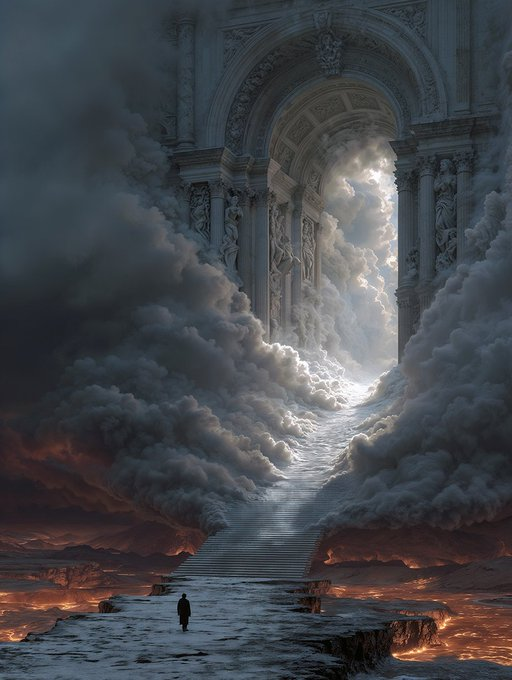Why shouldn’t I create rain to end a drought?
- Ascribe

- Sep 12, 2022
- 5 min read
Updated: May 20, 2024
Day 248
Do I question Your words because I do not see them come to pass as I would expect, and after all that has been said is there anything I can see that would confirm the truth of them? Is this the specter of Doubt?
Faith would imply that all things You have said are in existence, for again, You have said them, and once spoken are created. Even when I believe I do not doubt, I also believe I do not see that which was spoken by You coming to pass. Or at least not yet.

Could the issue be me? What do I think I should be seeing? And should I be speaking it into being if I believe it has been given? I think an issue might be one of reason: why would I cast a mountain into the sea even if I know that I am capable of doing so? The idea appears preposterous yet seems to demonstrate that an ability exists outside of my personal understanding – and therefore likely very Kingdom oriented.
Wisdom would indicate that the power of faith does not rely on my understanding for execution but moves of its own accord by the expression of creation. I have been stuck at what I think is a reasonable, and permissible, creation by my own assessment and not that of faith.
Why shouldn’t I create rain to put out a fire or end a drought?
Why shouldn’t I move the sides of war into peace? Why the need for me to pick a side at all if my intent is to end the war, and end the suffering of the innocent?
I want to change the monetary system, and the currency system – is that impossible for me alone? Faith says no. Do I need all the facts of consequences if that is done? Faith says no. What are the consequences of casting a mountain into the sea, and do I need to consider them? Your words make me not think so – and I believe they are not metaphorical.
Therefore, going forward, I sense I must begin to create by expressing in word what I believe to be good. That applies to everything I would want to see – without, in the world and people; and within, what I would see myself to be – even as You have said I am.
Followup 1.10.2023
What Will It Take To Get California Completely Out of Drought?
After two weeks of storms that have flooded thousands of homes and caused millions of dollars of destruction, you would think that California's drought woes would have been washed away. Important reservoirs have seen huge rises in their water levels, and areas of "extreme drought" have disappeared following the deluges, with more wet weather set to hit the state this week. But California's drought troubles aren't over yet, experts warn, as the storms may have brought too much rain at once, not enough snow that will melt into reservoirs in spring, and don't make up for the fact the past three years have been exceptionally dry.
'A Really Big Hole to Fill'
"The recent rains are very important in helping to prevent another dry year," Richard G. Luthy, a professor of civil and environmental engineering and water infrastructure expert at Stanford University, told Newsweek. "2020, 21 and 22 were exceptionally dry years. In 2022, Jan, Feb and Mar, normally wet months, were the driest since records were kept in the late 1800s. Lake Oroville and Shasta, the two biggest reservoirs, are still below average for this time of year. We have a really big hole to fill from three drought years in a row." It will take a lot more rain to refill these surface reservoirs, let alone replenish the groundwater water stores.
But Jacob Petersen-Perlman, a water resources geography expert and assistant professor at East Carolina University, told Newsweek it's hard to say exactly how much rain would be needed due to the large number of variables involved. "It's important to remember that timing and type of precipitation (rain vs. snow) is crucial for staying out of drought," Petersen-Perlman said. "Timing also matters—all the rain at once means that much of it will run off into the ocean instead of filling California's reservoirs. Second, if it continues to rain like it has been raining in California but not enough snow falls in the Sierras, drought may still persist."
'Too Much, Too Fast'
Petersen-Perlman said that if temperatures warm up too fast, much of the snowpack will melt too quickly and maintaining river flows for the summer will become much more difficult. Additionally, if the rains come too quickly and inconsistently, they may not refill California's aquifers sufficiently to relieve groundwater drought. "Surface water levels are only part of the picture—groundwater levels will likely still remain chronically low, because (rain or no rain) we deplete more groundwater than is replenished," Aakash Ahamed, a hydrologist and co-founder of the Water Data Lab, told Newsweek.
"Over the last 25 years, we have lost more than 150 km3 of groundwater from California, which would take many many years of rain to replace, even if there were no consumptive use for municipal or agricultural purposes. Emptying underground groundwater reservoirs show the bigger picture, and we'd need 150 MAF [million acre-foot] of water (3x total storage capacity of 50MAF) to replenish them—that's unlikely to happen anytime soon because we pump groundwater faster than it replenishes every year," Rich Pauloo, a hydrogeologist and co-founder of the Water Data Lab, told Newsweek. "It's a huge problem, and we'll run out of groundwater in 100-400 years at business as usual rate depending on the location." In a normal year California gets around 200 MAF of rain and snow, and it captures about 25% of this in surface reservoirs (50MAF combined capacity), Pauloo said.
"This year, statewide, currently we're 134% of normal for this time of year, but only 53% of normal for the full water year ending September 30, 2022 (we can still have dry Feb-May)," Pauloo said. "Our best hydro climate models still can't see more than a few weeks out—drought prediction remains an intractable scientific challenge. Surface reservoirs are at 78% average levels. Groundwater reservoirs are around 10% of normal across the state."
Despite the large amount of rain needed, the current rainfall can be used strategically to ensure maximum groundwater replenishment. "One opportunity to address this problem is through managed aquifer recharge—diverting surface water to replenish groundwater when abundant surface reserves are available (like now)," Ahamed said.
Wettest Ever Stretch December 26 to January 4 is now the record holder for the wettest 10-day stretch ever in San Francisco, and on December 31, 5.46 inches of rain fell in a single day in San Francisco. "Nearly all of California has seen much above average rainfall totals over the past several weeks, with totals 400-600% above average values. This has resulted in nearly saturated soils and increasingly high river levels," said the National Weather Service in a statement on January 10.
How is the current rainfall impacting California's drought status? 100% of CA remains "Abnormally Dry." But we are down to 0%, from 12.7%, experiencing "Exceptional Drought" in the last month. This has helped bring down drought levels. U.S. Drought Monitor data shows the "exceptional drought" classification that covered 7 percent of the state as of December 27 has completely disappeared in the past fortnight.



Comments